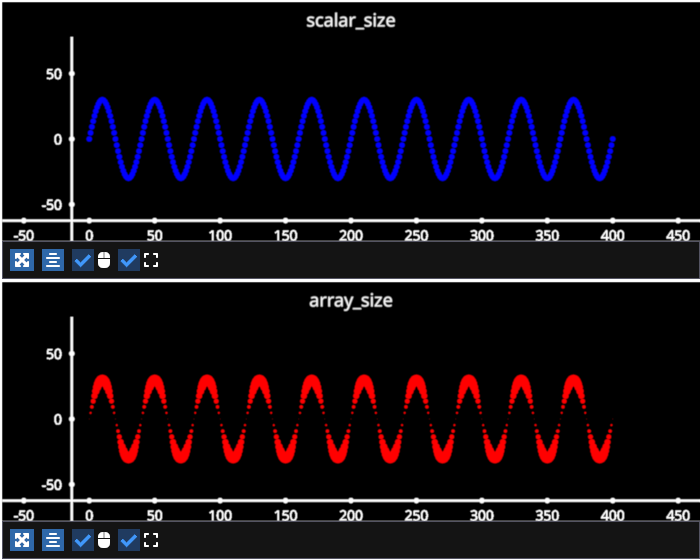Note
Go to the end to download the full example code.
Scatter Plot Size#
Example that shows how to set scatter sizes in two different ways.
One subplot uses a single scaler value for every point, and another subplot uses an array that defines the size for each individual scatter point.

/home/runner/work/fastplotlib/fastplotlib/fastplotlib/graphics/features/_base.py:18: UserWarning: casting float64 array to float32
warn(f"casting {array.dtype} array to float32")
# test_example = true
import numpy as np
import fastplotlib as fpl
# figure with 2 rows and 3 columns
shape = (2, 1)
# you can give string names for each subplot within the figure
names = [["scalar_size"], ["array_size"]]
# Create the figure
figure = fpl.Figure(shape=shape, names=names, size=(700, 560))
# get y_values using sin function
angles = np.arange(0, 20 * np.pi + 0.001, np.pi / 20)
y_values = 30 * np.sin(angles) # 1 thousand points
x_values = np.array([x for x in range(len(y_values))], dtype=np.float32)
data = np.column_stack([x_values, y_values])
figure["scalar_size"].add_scatter(
data=data, sizes=5, colors="blue"
) # add a set of scalar sizes
non_scalar_sizes = np.abs((y_values / np.pi)) # ensure minimum size of 5
figure["array_size"].add_scatter(data=data, sizes=non_scalar_sizes, colors="red")
for graph in figure:
graph.auto_scale(maintain_aspect=True)
figure.show()
# NOTE: fpl.loop.run() should not be used for interactive sessions
# See the "JupyterLab and IPython" section in the user guide
if __name__ == "__main__":
print(__doc__)
fpl.loop.run()
Total running time of the script: (0 minutes 0.377 seconds)
